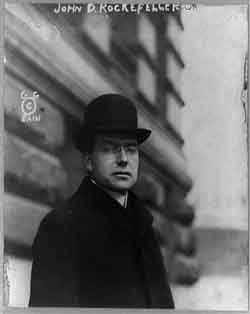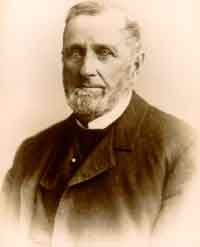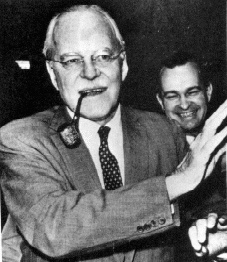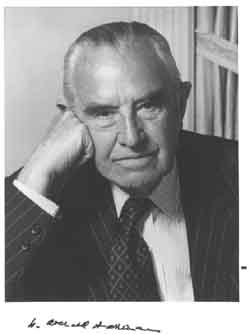 John Davison Rockefeller
(1839-1937), the world’s first billionaire, was America’s
most generous philanthropist, fascist financier and Nazi collaborator.
John Davison Rockefeller
(1839-1937), the world’s first billionaire, was America’s
most generous philanthropist, fascist financier and Nazi collaborator.Rockefeller Associates
By Richard Sanders, Editor, Press for Conversion!
The Rockefellers were heavy financial backers of the American Liberty League.
 John Davison Rockefeller
(1839-1937), the world’s first billionaire, was America’s
most generous philanthropist, fascist financier and Nazi collaborator.
John Davison Rockefeller
(1839-1937), the world’s first billionaire, was America’s
most generous philanthropist, fascist financier and Nazi collaborator.
Although Rockefeller’s wealth was based largely on a near global control of oil refining, he also had large interests in other monoplies. As Anthony Sutton notes, Rockefeller
“controlled the copper trust, the smelters trust and the gigantic tobacco trust, in addition to having influence in some Morgan properties such as the U.S. Steel Corporation as well as in hundreds of smaller industrial trusts, public service operations, railroads and banking institutions. National City Bank was the largest of the banks influenced by Standard Oil-Rockefeller, but financial control extended to the U.S. Trust Co. and Hanover National Bank [and] major life insurance companies – Equitable Life and Mutual of New York” (Wall Street and the Bolshevik Revolution, 1981).
 His incredible rags-to-riches
success story owes much to what he learned from his father’s
attitudes towards business and respect for the public good. Descended
from hardworking German immigrants, his father William Avery Rockefeller
was a travelling, snake oil salesman. “Big Bill” excelled
as a quack doctor, or pitch man, conning the sick and desperate
into buying expensive remedies that were either useless or downright
dangerous. “He would be gone for months and come back with
a great roll of money…. He would go to small towns and put
up handbills advertising himself as ‘The Celebrated Dr. Levingston.’
He advertised to cure anything, but made a specialty of cancer
and kidney troubles” (MacDonald, “Double Life,”
New York World, February 2, 1908). But these were not “Doc’s”
only crimes. He was indicted for rape, but was not arrested or
tried. He fled the area with family and escaped neighbours who
accused him of horse thieving, burglary, arson and counterfeiting.
He had two wives, simultaneously, and was a bigamist for 34 years.
He met his second wife in Norwich, Ontario, where he sold lumber
in 1853, calling himself William Levingston.
His incredible rags-to-riches
success story owes much to what he learned from his father’s
attitudes towards business and respect for the public good. Descended
from hardworking German immigrants, his father William Avery Rockefeller
was a travelling, snake oil salesman. “Big Bill” excelled
as a quack doctor, or pitch man, conning the sick and desperate
into buying expensive remedies that were either useless or downright
dangerous. “He would be gone for months and come back with
a great roll of money…. He would go to small towns and put
up handbills advertising himself as ‘The Celebrated Dr. Levingston.’
He advertised to cure anything, but made a specialty of cancer
and kidney troubles” (MacDonald, “Double Life,”
New York World, February 2, 1908). But these were not “Doc’s”
only crimes. He was indicted for rape, but was not arrested or
tried. He fled the area with family and escaped neighbours who
accused him of horse thieving, burglary, arson and counterfeiting.
He had two wives, simultaneously, and was a bigamist for 34 years.
He met his second wife in Norwich, Ontario, where he sold lumber
in 1853, calling himself William Levingston.
William’s example provided ample life lessons to his sons about the business values of duplicity, deceit, and a blatant disregard for public health. John dropped out of high school in 1855 to take a business course. He worked as a bookkeeper and then teamed up with a friend to start a grain commission business. In 1863, the Civil War propelled him into the oil business. That year, he – like J.P. Morgan and other rising stars – paid $300 to avoid conscription. It was a small price for them, but unattainable for the thousands who would die. At first, he sold whiskey at inflated rates to Federal soldiers. Then, he invested his profits in oil refineries. The South had been supplying turpentine to the North for camphene-fueled lights. When the war cut off the North’s access to this fuel, kerosene from Pennsylvania oil quickly took over as the lamp fuel of choice and stimulated his oil business.
In 1865, Rockefeller bought out his partners in the kerosene business for $72,500. In 1870, he and a few others, organized The Standard Oil Company, with capital of $1 million. He built his company by buying out competitors, price cutting and controlling secondary businesses related to pipelines, trains, oil terminals and barrel making. By 1880, his monopoly controlled the refining of 95% of America’s oil. In 1885, 70% of Standard Oil’s sales were overseas, largely to northern Europe and Russia. All of its properties were merged into the Standard Oil Trust with an initial capitalization of $70 million, and by 1900 Rockefeller controlled about two-thirds of the entire world’s oil supply. He was also a director of the U.S. Steel Corp when it formed in 1901.
In the 1880s, an oil boom was brewing in Tsarist Russia, around the Caspian Sea town of Baku. Robert Nobel, the son of Alfred Nobel (originator of Sweden’s peace prize and the inventor of dynamite), was soon competing with the Parisian Rothschilds for control of Central Asia oil treasure. Their exports threatened Rockefeller’s near global oil monopoly, especially when Marcus Samuel, future founder of Shell Oil, developed tankers to carry the Rothchild’s oil to Europe and Asia. In 1903, Rockefeller made a deal with the Tsarist government to lease and then buy the Baku oil fields. Besides selling vast quantities of American oil to pre-Soviet Russia, Rockefeller also had millions invested there. Thereafter, seeing an inevitable revolution looming on the horizon, Rockefeller also invested in anti-Tzarist forces to protect this branch of his empire. The Soviets did expropriate the Caspian oil fields from the Nobels and Rothschilds. Rockefeller’s National City Bank also lost assets, thanks to the revolution. Its lawyer, Joseph Proskauer, fought a legal battle to get Rockefeller’s money back. In 1926, Walter Teagle, the president of Standard Oil of New Jersey, successfully negotiated oil concessions in the Soviet Union.
By that time though, Standard Oil’s near global monopoly had been broken up. In 1911, the U.S. Supreme Court decided it was violating anti-trust laws and dissolved it into about three dozen companies. Many of these are now household names like Chevron (Standard Oil California), Amoco (Standard Oil Indiana), Mobil (Standard Oil New Jersey) and Exxon, previously called Esso (Standard Oil New Jersey).
When the U.S. was debating whether to join WWI, a group of so-called “War Hawks,” calling themselves the National Security League, knew that this war would be a major boon to profits. This League of bankers and industrialists, including Rockefeller, J.P. Morgan, Coleman du Pont and H.H. Rodgers of Standard Oil, promoted increases in arms production and universal military training. By 1917, they had helped build war hysteria to a fever pitch. But not all Americans were on their side. The Woman’s Peace Party, many suffragists and others, strongly opposed America’s entry into WWI. However, the League was successful and the War Hawks’ profits skyrocketed.
Soon after WWI and the Russian revolution, many among America’s wealthy elite felt threatened by rising radicalism, particularly among unions. In April 1919, letter bombs, destined for John D. Rockefeller, J.P. Morgan and others, were supposedly discovered in the U.S. postal system. The media quickly stirred up a massive Red Scare by blaming unions, communists, anarchists and foreign agitators. John Spivak says: “Trade unions were openly disbelieving and denounced with anger the so-called discoveries as a deliberate frame-up to provide excuses for more raids against organized labour” (A Man in His Time, 1967). This incident and others were used as pretexts for the Palmer Raids, during which the government rounded up more than ten thousand activists across the country.
Throughout the 1920s and 1930s, while the persecution of leftists continued, corporate leaders on the extreme right, continued their criminal rampages in pursuit of profit. Although Rockefeller’s many links to Nazism are too numerous to list here, a few examples are worth noting. In the 1920s, Exxon entered into partnerships with Germany’s top chemical cartel members, BASF and I.G. Farben. The Bank for International Settlements, which helped fund the Nazis before and during WWII, was created in 1930 by the world’s central banks, including the Federal Reserve Bank of NY. Its creation was inspired by the Nazi government and its bankers. Its first president was Gates McGarrah, a Rockefeller banker formerly of Chase National Bank and the “Fed.”

 In 1932,
Chevron struck oil in Bahrain and was soon operating in Saudi
Arabia. In 1933, when Hitler seized power, Standard Oil New Jersey
supplied Germany with the patents it required for tetraethyl lead
aviation fuel. In 1936, the company Schroder, Rockefeller Investment
Bankers, included board directors linked to the Gestapo and several
European, Nazi-linked banks. It’s lawyers were John Foster
Dulles and Allan Dulles, leading Wall Street fascists who drummed
up American investments in Germany and elsewhere. The Dulles law
firm represented I.G. Farben and Fritz Thyssen. Thyssen was Hitler’s
biggest German financier. The Dulles brothers later became Secretary
of State and CIA Director, respectively.
In 1932,
Chevron struck oil in Bahrain and was soon operating in Saudi
Arabia. In 1933, when Hitler seized power, Standard Oil New Jersey
supplied Germany with the patents it required for tetraethyl lead
aviation fuel. In 1936, the company Schroder, Rockefeller Investment
Bankers, included board directors linked to the Gestapo and several
European, Nazi-linked banks. It’s lawyers were John Foster
Dulles and Allan Dulles, leading Wall Street fascists who drummed
up American investments in Germany and elsewhere. The Dulles law
firm represented I.G. Farben and Fritz Thyssen. Thyssen was Hitler’s
biggest German financier. The Dulles brothers later became Secretary
of State and CIA Director, respectively.
In 1937, John D. Rockefeller died, but his legacy of using oil money to grease the wheels of fascism continued. That year, as the Spanish Civil War raged, Texas Co. (later called Texaco) fueled Franco’s fascists. (In 1936, Texas Co. and Standard Oil California formed California Texas Oil (later Caltex) to combine Texas Co’s marketing network in the Middle East with Standard’s operations there.) Texas Co. also continued shipping oil to Germany during WWII. In 1938, Brown Brothers, Harriman, the Wall Street investment firm (with senior partners Prescott Bush and George Herbert Walker) was involved in funding the supply of leaded gas for the Nazi Luftwaffe. Chevron and Texas Co. created Aramco in 1939, to pump Saudi oil for the Nazi war machine. In 1940, Texaco provided an office, in their Chrysler Building, for a Nazi intelligence officer, Dr. Gerhardt Westrick. Executives of Standard Oil’s German subsidiary were “Prominent figures of Himmler’s Circle of Friends of the Gestapo – its chief financiers – and close friends and colleagues of the Baron von Schroder” a leading Gesatpo officer and financier (Charles Higham, Trading with the Enemy). Just before WWII, the Rockefeller’s Chase Bank collaborated with the Nazi’s Schroder Bank to raise $25 million for Germany’s war economy. They also supplied the German government with names and background information on 10,000 fascist sympathizers in America. Throughout WWII, Rockefeller’s Chase Bank stayed open in Nazi-occupied Paris, providing services for Germany’s embassy and its businesses.
In 1943, Roosevelt’s government took control of Rockefeller’s Aramco. It also seized assets of the Union Banking Corp., which Harriman, Bush and Walker had built up by collaborating with Nazi companies that used slave labour. This money was later returned and it launched the Bushes in oil and politics.
In 1953, after an elected upstart named Dr. Mohammed Mossadegh nationalized Iran’s oil business, a UK/U.S.-backed coup returned the Shah to power. CIA Director Allan Dulles and his brother, Secretary of State John Foster Dulles, were instrumental in this coup. Previously, Iran’s oil had been controlled by the Anglo-Persian Oil Co. (i.e., British Petroleum, BP) but after the U.S. role in this coup, U.S. companies got a 40% share and the top beneficiary was Standard Oil of New Jersey.
The next year, the Dulles boys were at it again orchestrating a coup in Guatemala. This one ushered in decades of fascist military governments that killed hundreds of thousands of innocents. But, it brought great profits for Rockefeller’s United Fruit Co., in which the Dulles were invested. Allen had also been on its Board of Trustees.
John D. Rockefeller would be happy to see the re-merging of his great monopoly. In 1988, Standard Oil merged with British Petroleum. Since then, other mergers have reunited many of his original oil companies. Exxon and Mobil reunited in 1999, to become the world’s top oil business. They made profits of $17.7 billion the next year. BP, merging with Amoco and Standard Oil Ohio, was number two that year and made profits of $12 billion.
J.D. Rockefeller’s philanthropy has been much lauded. Even as a student, he reportedly gave donations to his Baptist church and to foreign Sunday schools. By 1900, he offered to buy a whole church for Baptist preacher Thomas Dixon, a former, southern politician who was then flogging his white supremacist gospel in New York. But from the pulpit, Dixon’s fiery tirades against “creeping negroidism” didn’t reach enough people, so he took up writing respectable, romantic novels about the KKK. He churned out two dozen books. The Clansman, his race-baiting best seller, extolled the Klan’s role in redeeming the South. In 1915, it was made into a movie, called The Birth of a Nation. Endorsed by President Wilson, the film helped revive this dreaded terrorist organization.
Rockefeller’s great generosity was aimed largely at medical education, perhaps because of his father’s career and its peculiar contributions to medicine. J.D.Rockefeller, being a high school dropout, was not well-suited to his new role as godfather of the country’s centres for higher learning. His philanthropy was permeated with extremely racist views. In 1901, the Rockefeller Institute for Medical Research was created. In 1902, the General Education Board (GEB) began four decades of tremendously controversial influence over American schools and universities.
 That same year, J.D. Rockefeller
and Averell Harriman, a business partner of Prescott Bush and
George Herbert Walker in Brown Brothers Harriman, gave $11 million
to create the Cold Spring Harbor Laboratory. Built on Manhattan
property owned by the Dulles brothers, it spawned America’s
ground-breaking “eugenics” research and the world’s
first “racial hygiene” laws. By 1907, Rockefeller funding
was heavily influencing America’s medical institutions. The
Rockefeller Institute created the first genetics lab in 1909.
The following year, the Eugenics Research Association and the
Eugenics Records Office were founded near Cold Spring Harbor,
New York, on land donated by the widow of Averell Harriman. In
1911, John Foster Dulles summed up eugenics, saying that by eliminating
“the weakest members of the population” a purer race
could be created.
That same year, J.D. Rockefeller
and Averell Harriman, a business partner of Prescott Bush and
George Herbert Walker in Brown Brothers Harriman, gave $11 million
to create the Cold Spring Harbor Laboratory. Built on Manhattan
property owned by the Dulles brothers, it spawned America’s
ground-breaking “eugenics” research and the world’s
first “racial hygiene” laws. By 1907, Rockefeller funding
was heavily influencing America’s medical institutions. The
Rockefeller Institute created the first genetics lab in 1909.
The following year, the Eugenics Research Association and the
Eugenics Records Office were founded near Cold Spring Harbor,
New York, on land donated by the widow of Averell Harriman. In
1911, John Foster Dulles summed up eugenics, saying that by eliminating
“the weakest members of the population” a purer race
could be created.
In 1928, Germany’s Kaiser Wilhelm Institute for Eugenics, Anthropology and Human Heredity was created. Run by Ernst Rudin, Hitler’s foremost “racial hygienist,” the institute’s main financing came from Rockefeller. Ironically, by 1936 an early psychiatrist at that institute, the half Jewish Dr. Franz Kallmann, had fled Nazism to America. According to Anton Chaitkin, Kallman’s experiments on 1,000 schizophrenics, published by the Freemasons, was used in 1939 to justify the Nazi’s mass murder of “mental patients and various ‘defective’ people.” Meanwhile, other Nazi doctors conducted incredibly cruel and vicious experiments on live, captive human subjects. Their body parts “were delivered to [Josef] Mengele, [Otmar] Verschuer and the other Rockefeller-linked contingent at the Wilhelm Institute.”
References:
Edward Jay Epstein, Agency of Fear: Opiates and Political Power
in America, 1977
http://www.mega.nu:8080/ampp/epstein/aof2.html
John D. Rockefeller Page
http://voteview.uh.edu/entrejdr.htm
Albert I. Berger, "William Avery Rockefeller of ND: The
Father of the Man Who Founded Standard Oil and his Remarkable
Double Life,"
http://www.nd-humanities.org/html/rockefeller.html
Destination New Jersey: Sharing With Standard
http://www.pslc.ws/macrog/exp/rubber/synth/share.htm
Antony Sutton, Wall Street and the Bolshevik Revolution, 1981
http://www.democracyunbound.com/wallstbolshevik.html
Stephen Kinzer, "A Perilous New Contest for the Next Oil
Prize," New York Times, Sept. 21, 1997
http://www.mtholyoke.edu/acad/intrel/azeroil.htm
Elijah Zarwan, "Pipeline Politics," World Press Review,
Nov.-Dec. 2001
http://www.worldpress.org/specials/pp/front.htm
Richard N. Draheim, Jr., "Oil and 'Socialism,'" The
Dallas Libertarian, Feb 19, 1998.
http://www.lpdallas.org/features/draheim/dr980219.htm
Philip Mattera, "The Return of Windfall Profits: An Overview
of the Oil Industry," Corporate Research E-Letter, Mar. 2001.
http://www.corp-research.org/mar01.htm
Texaco History
http://www.texaco.com/texaco/abouttexaco/history.htm
Yagmur Kochumov, "Issues of International Law and Politics
in the Caspian in the Context of the Turkrnenistan-Azerbaijan
Discussion and Fuel Transport," Caspian Crossroads, Winter
1999.
ourworld.compuserve.com/homepages/usazerb/422.htm
Caspian Projects II
http://www.fas.org/man/dod-101/ops/war/2000/02/islam/365.htm
Eva Sion, "From 1911 to 9/11: The Institutions of Conspiracy,"
The Tablet.
http://www.tabletnewspaper.com/politics/66_tftgk.htm
Marcelo Bucheli, The History of the United Fruit Company
http://www.stanford.edu/~mbucheli/bitter.html
Daniel Yergin, The Prize: The Epic Quest for Oil, Money and
Power, 1992.
http://www.businessweek.com/chapter/yergin.htm
Dixon, Thomas Jr.: 1864-1946, Writer
http://docsouth.dsi.internet2.edu/dixonclan/about.html
Wyn Craig Wade, The Fiery Cross, 1987
World War I War Hawks and the Passing of the Nineteenth Amendment
http://www.geocities.com/cyberpza007/ww1/WorldWar1WarHawks.html
Dr. Len Horowitz, "The American Red Double-cross"
http://www.tetrahedron.org/articles/apocalypse/red_double_cross.html
Source: Press for Conversion! magazine, Issue # 53, "Facing the Corporate Roots of American Fascism," March 2004. Published by the Coalition to Oppose the Arms Trade.
Order a Copy: Order a hard copy of this 54-page issue of Press for Conversion! on the fascist plot to overthrow President F.D.Roosevelt and the corporate leaders who planned and financed this failed coup.